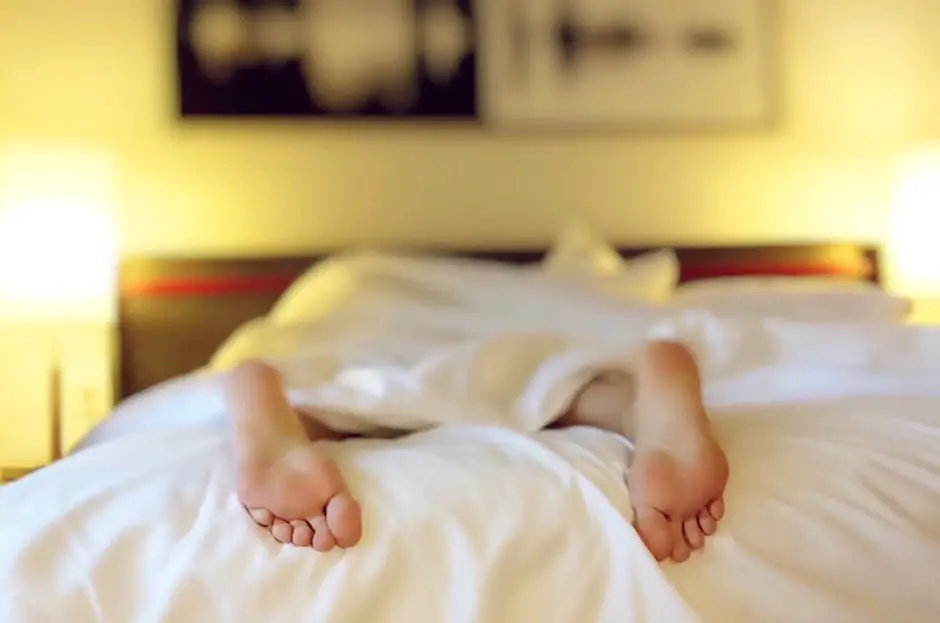In a rapidly digitizing world, almost every one of us is encased within the realms of technology, significantly impacted by prolonged periods of screen time exposure. As this digital interaction stretches out into our late-night domains, intriguing concerns about its effects on sleep quality and dream patterns emerge. This exploration takes us on an enlightening journey through the labyrinth of sleep architecture, the impact of electronic devices on sleep quality, the possible correlation between screen time and nightmares, and the resultant psychological repercussions. By integrating scientific investigations, psychological theories, and real-world observations, we intend to navigate through this intricate web.
Understanding Sleep Architecture
Unveiling the Interplay between Screen Time and Sleep Architecture: An In-Depth Examination
The contemporary panorama of technology and incessant consumption of screen time has precipitated a profound impact on human sleep architecture. The complex structure of sleep is greatly mediated by the quality and the quantity of exposure to different sources of light, especially emanating from screens of digital devices.
To fully comprehend this intricate relationship, we must first delve into the fundamental framework of sleep architecture. Sleep in humans is divided mainly into two categories: Rapid Eye Movement (REM) and Non-Rapid Eye Movement (NREM). Each cycle comprises of NREM sleep that further bifurcates into three stages known as N1, N2, N3 or light sleep, true sleep, and deep sleep, respectively. Following these, REM sleep or ‘dream sleep’ ensues. The typical night sleep pattern begins with NREM and oscillates between NREM and REM at approximately 90-minute intervals.
The sensitive mechanism that balances these cycles – the ‘circadian rhythm’ – may be likened to an internal master clock operating within the human brain. This rhythm is predominantly influenced by light, alluding to a potential disruption caused by excessive artificial light from digital screens.
In the domain of screen time and its consequences on sleep, light is not equitable. The light modern screens emanate is heavily skewed towards the blue wavelength. A breadth of empirical research has indubitably identified this blue light as a principle culprit in sleep alteration. It effectively suppresses the production of melatonin – the hormone orchestrating sleep and wakefulness – thereby extending the ‘wake-up’ signal within our biological clock and disturbing our sleep onset.
Studies elucidating this phenomenon have shown that prolonged screen time before bedtime significantly reduces the overall duration of REM sleep along with delays in REM onset. Reduced or disrupted REM sleep may contribute to mood disorders and impaired cognitive functions, underscoring the significance of the interplay between screen time and sleep.
Further, exposure to screen light in the evening has been shown to decrease sleep efficacy, diminish sleep duration, and retard the timing of our body clock. A measurable increase in time spent in stage N1 or ‘light sleep’, at the cost of time spent in restorative deep sleep, has been markedly observed in those who habitually use screens before bedtime.
In conclusion, the entanglement between screen time exposure and its subsequent effect on sleep architecture is undeniably profound. The deleterious impact of screen time on sleep patterns, particularly due to blue light, underscores the importance of moderating evening screen usage. Advancements in mitigation techniques, such as light filtering software or using red-tinted glasses, are noteworthy steps towards bridging the gap between our technological indulgence and the natural rhythms of our body. The path towards unwrapping the understanding of this field remains a beacon of interest for keen researchers dedicated to enhancing human well-being.

The Impact of Electronic Devices on Sleep Quality
Continuing our exploration into the impact of late-night technology use on the quality of sleep, let’s delve deeper into other implicit factors present that can potentially disrupt the harmony of our sleep-wake cycle.
Based on the sheer prevalence of individuals taking digital devices into the bedroom – a space traditionally reserved for sleep – the boundaries between our waking and sleep states have become increasingly blurred. The intrusion of distracting digital activities into the sleep environment concocts an unfavorable milieu for the initiation of sleep, leading to delayed sleep onset.
Late-night technology use doesn’t merely exist in isolation as a factor affecting sleep quality; it often fuels increased levels of arousal. Engaging in activities such as game playing, surfing the Internet, or checking emails can evoke cognitive and emotional arousal, which subsequently impacts the ease of transitioning into the highly desired state of sleep. This concurrent excitation of the mind makes the body resist relinquishing itself to rest, thereby disrupting the sleep-wake cycle.
Moreover, the buzz of awaiting communication, especially amongst adolescents and young adults, creates anticipatory anxiety, further worsening sleep quality. Just the simple expectation of receiving a call or a message can hinder the ability to initiate and maintain sleep, infringing upon the sanctity of our resting hours.
Let us not forget the impact of the night-time awakening. The utilization of digital devices after bedtime for communication means a greater possibility for disruption during core sleep hours, leading to fragmented sleep. Such interruptions have been linked with waking up feeling unrefreshed and daytime sleepiness, undermining the restoration that sleep is supposed to offer.
While more direct technological influences on sleep have been thoroughly discussed, it’s vital to recognize that late-night usage is also associated with unhealthy lifestyle behaviours. These include erratic meal patterns, lower physical activity, increased consumption of caffeine, and the displacement of sleep-preventative behaviours such as regular evening routines and relaxation techniques. These behaviours tend to interplay with technology usage to detrimentally affect sleep health.
Lasty, sleep hygiene merits our attention. The allure of digital devices before sleep has dampened the widespread practice of good sleep hygiene practices such as creating a dark and quiet sleep environment, avoiding stressors before bedtime, and sticking to regular sleep and wake times. This lapse inevitably weakens the prime function of maintaining a robust and healthy sleep pattern.
As the ubiquitous penetration of technology seeps deeper into our sleep environment, understanding its impact on sleep quality becomes more crucial. Striking a balance between digital engagement and safeguarding sleep health is the need of our hour. Propelling this discourse to a wider audience could be our initial step in awakening society from the grip of technological sleep disruptions. It entails preparing ourselves to indulge in the digital universe responsibly, without losing sight of the rich, restorative benefits of a good night’s sleep.

Screen Time and Dreaming: A Correlation?
Branching off from the established detriments of late-night screen exposure on sleep structures and the disruption of circadian rhythms, the phenomenon of technology in the bedroom is becoming increasingly prevalent. This trend, propagated primarily by the ubiquitous use of smartphones and laptops, is reshaping the sacrosanct boundaries that once separated our waking and slumbering states.
Increasingly, scientific analysis illuminates the role of late-night screen use in delaying sleep onset. The brightness of the screen itself presents an environmental cue contrasting with the dim light conditions typically associated with nighttime, contributing to a state of physiological arousal that is antithetical to the restfulness required for sleep. This engagement with digital stimuli in the twilight hours subsequently challenges the brain’s ability to disengage and transition into the necessary state of relaxation conducive to healthy sleep.
Beyond the physiological responses, participation in interactive digital activities such as social networking, gaming, or catching up on work or studies generates a state of mental arousal. This heightened state of alertness, at its climax when it should be reaching its nadir, contributes to later sleep onset and can significantly impair sleep quality.
An additional psychological component to this dilemma is the emergence of anticipatory anxiety. The ‘fear of missing out’—or FOMO—produced by the constant availability and flow of digital information engenders a compulsion to remain constantly connected. This anticipatory anxiety created by the potential of an ignored notification or an unchecked message can introduce levels of stress that impact the ability to initiate and maintain sleep.
The integration of technology into our sleep environment also results in the disruption of core sleep hours. Interruptions by incoming messages or alerts contribute to a fragmentation of the sleep architecture, with cascading impacts on the depth and restorative quality of sleep.
Moreover, late-night technology use heralds a suite of unhealthy lifestyle behaviors. These include erratic sleep schedules, excessive caffeine consumption, and a neglect of sleep hygiene practices. Where the nightstand was once home to the sleep-inducing reading of books, it is now increasingly dominated by screens emitting wake-promoting light.
As the boundaries between bedrooms and digital world become ever more nebulous, understanding the impact of technology on sleep quality becomes paramount. Cultivating a balance between technological engagement and sleep health could well be one of the defining health challenges of our digitally-enhanced epoch. In a society where technology is advancing at an unprecedented pace, knowledge and understanding of these effects is not just an academic curiosity—it is an absolute necessity.

The Psychological Perspective
Having comprehensively explored the impact of screen time on sleep patterns and the biological implications involved, this piece continues the discussion with an examination of the psychological implications of nightmares induced by late-night screen use.
Exposure to stimulating content before sleep has been linked to an increase in the occurrence of nightmares. Frightening, or merely intense and dramatic, visual or auditory stimuli right before sleep may infuse the dreams occurring during REM sleep with similar themes, leading to nightmares. Scientists have found this may alter the emotional tone of dreams, causing increases in anxiety, fear, and aggression.
Fascinatingly, the psychological impact of late-night screen exposure is multi-layered. It’s not just the content viewed that can cause nightmares, but the mere act of engaging with digital devices at night can trigger disturbing dreams. A disturbed sleep cycle, as we’ve established, can lead to irregular and intense dream patterns, including nightmares – creating a vicious cycle.
A particularly intriguing phenomenon from the digital age is the Fear Of Missing Out (FOMO). This anxiety, induced by the constant stream of updates and social media engagement, may cause individuals to delay their bedtime, leading to late-night screen use. Indeed, FOMO could lead to other negative sleep outcomes beyond nightmares, including shorter sleep duration and poorer quality sleep.
More specifically, individuals may end up dreaming about their late-night screen activities. The concept of Tetris Syndrome, where individuals dream about experiences repeated throughout the day, can be seen here, leading to further disruption in the sleep cycle.
It is also important to consider the individual’s perception of their sleep environment. If a person perceives their bedtime screen activities as relaxing or decompressing, the negative impacts might be lower. However, if screen time is seen as a compulsory task or a cause of stress, the negative consequences, including nightmares and anxiety, could increase.
Ideally, understanding these psychological implications demands an interdisciplinary approach, combining insights from fields such as behavioral psychology, sleep medicine, and digital media studies.
In conclusion, it’s clear that late-night screen use has far-reaching psychological implications. These extend beyond the immediate detriments to sleep structure and circadian rhythms, influencing the content and theme of dreams, feelings of anxiety, and overall sleep perception. As digital technology continues to evolve and embed itself in daily life, there is an urgent need for more research into these issues to ascertain how best to balance digital engagement’s benefits with the requirement for quality sleep. As science continues to deepen the understanding of sleep, undoubtedly, new and innovative solutions to this modern challenge will emerge.

The influence of late-night screen time spans more than just circadian rhythms and melatonin production. It delves deeper into the corridors of dream stages, potentially causing unsettling dreams or even nightmares. More than just a physiological phenomenon, the impact of screen time has serious psychological implications like stress, anxiety, and other mental health concerns. While technology progression is inevitable, the inclusion of proper sleep hygiene practices might pose as a balancing factor in this disquieting scenario. As we continue progressing into an even more digitized future, it becomes quintessential to consider these connections between our virtual and nocturnal lives and adjust our habits accordingly.
